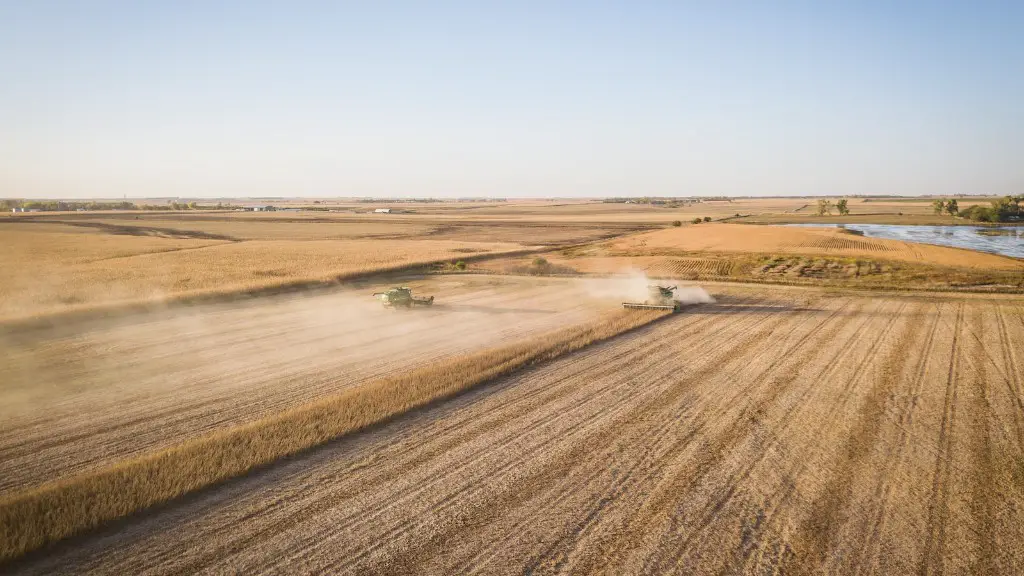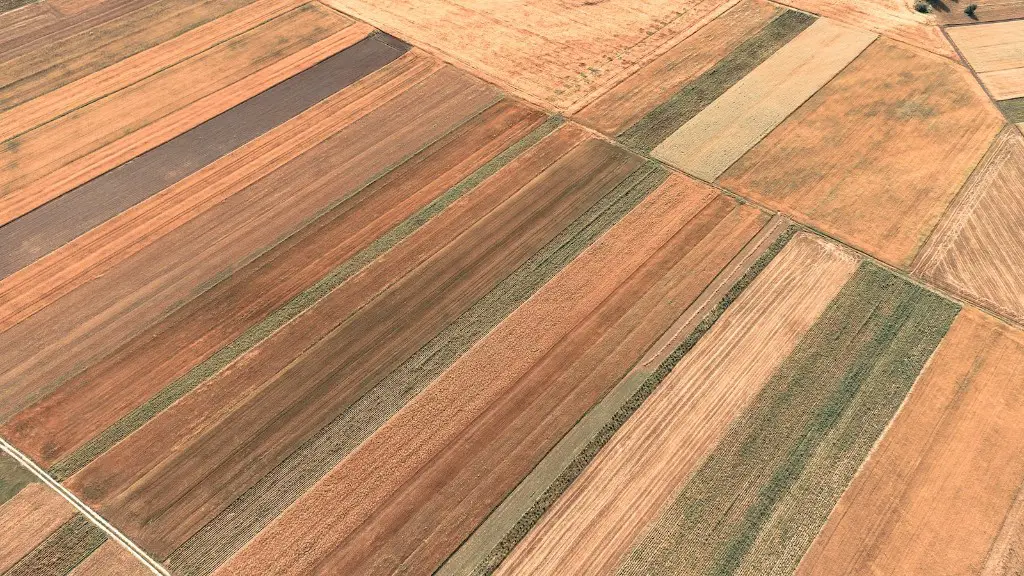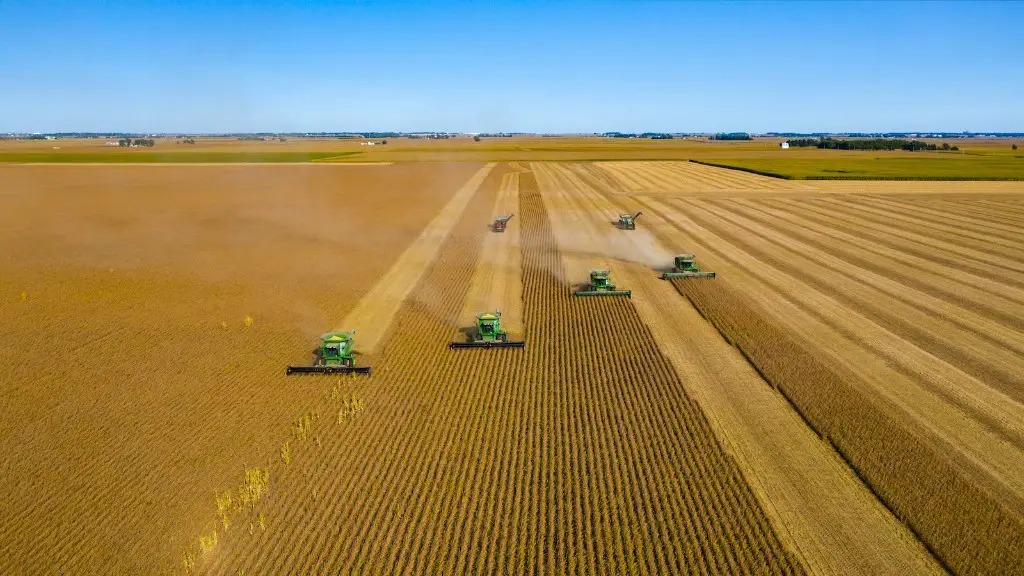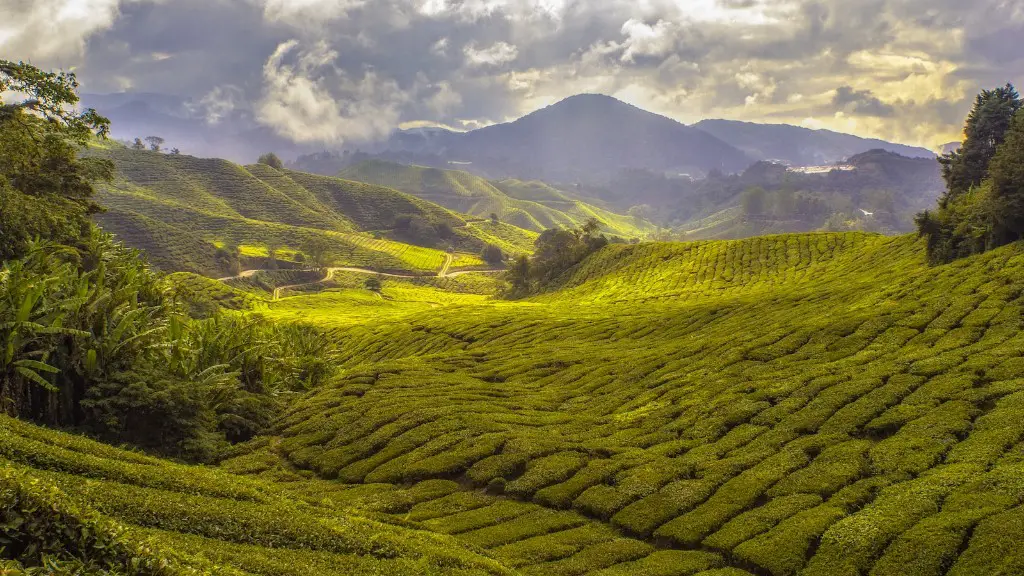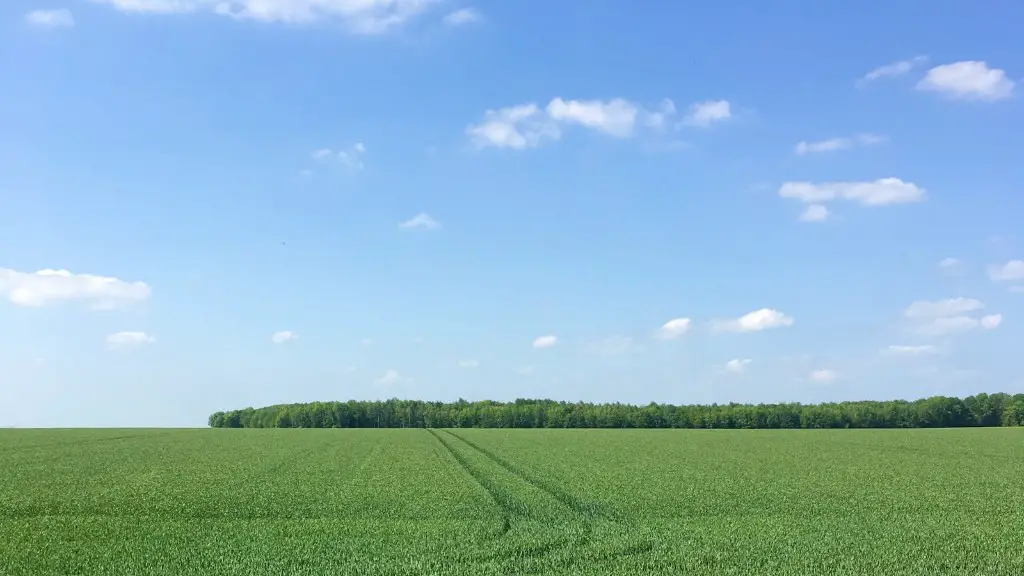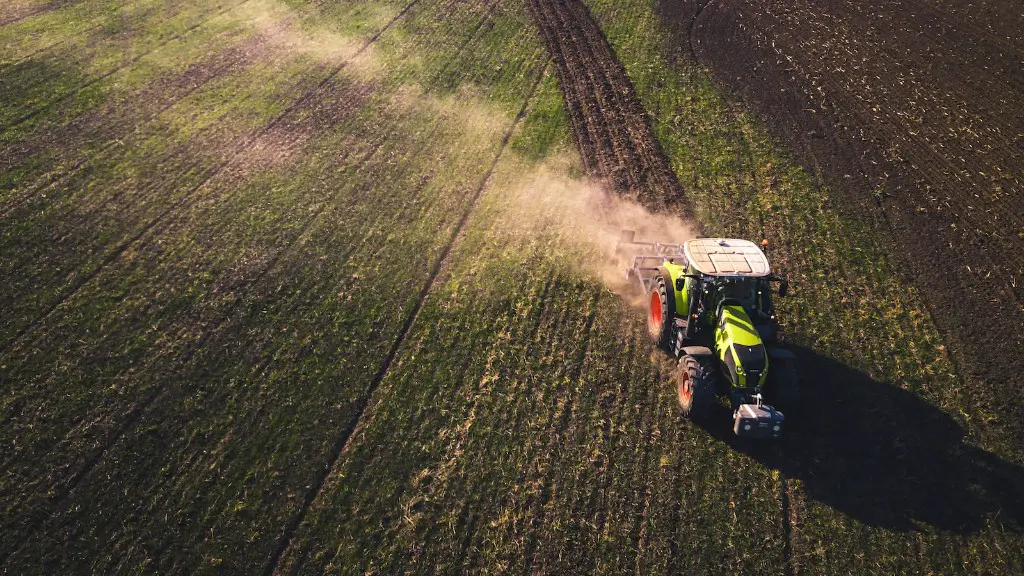Climate change has become a top global concern in recent years. The Earth’s average surface temperature has risen about 1.62 degrees Fahrenheit since the late 19th century, and it is projected to rise another 0.3 to 1.2 degrees Fahrenheit over the next few decades. While this might not seem like a lot, it has already had major impacts on the world’s climate and ecosystem. The Arctic is melting, sea levels are rising, and extreme weather events are becoming more frequent and more intense.
All of this has profound implications for agriculture. The world’s food supply is directly impacted by changes in the climate. Extreme weather events can destroy crops, while long-term changes in temperature and precipitation patterns can alter the suitability of different regions for different types of agriculture. As the climate continues to change, it is essential that we adapt our agricultural practices to ensure that we can continue to feed the world’s growing population.
Climate change refers to a broad array of environmental degradation that is predicted to result from increasing levels of atmospheric CO2, including global warming, alterations in precipitation, sea level changes and more extreme weather events. All of these effects could have profound implications for agriculture, which is highly sensitive to changes in climate.
Global warming will likely lead to increases in average global temperatures and changes in precipitation patterns. These changes could result in more frequent and more intense droughts, heat waves, and floods. These extreme weather events could reduce crop yields, damage infrastructure, and contaminate water supplies. In addition, rising temperatures could expand the range of pests and diseases, further stressing crops.
Sea level rise, another consequence of climate change, could inundate coastal farmland and destroy infrastructure. This would not only damage crops but also disrupt transportation and disrupt supply chains.
Agriculture is a major contributor to greenhouse gas emissions, so reducing emissions from agriculture is an important part of mitigating climate change. Farm management practices that can help reduce emissions include using nitrogen-based fertilizers more efficiently, growing cover crops, and adopting no-till or reduced tillage practices.
How does climate change affect agriculture?
Climate change is causing shifts in temperature and precipitation patterns that are affecting agricultural production around the world. These changes are making it more difficult for farmers to grow crops and rear livestock, and are leading to lower yields and increased costs. In some cases, climate change is also causing farms to be abandoned altogether.
Climate change is already having an impact on agriculture in the United States. We’ve seen an increase in flooding in many agricultural regions of the country, including the Midwest, the Southern Plains, and California. Sea level rise is also ratcheting up the frequency and intensity of flooding on farms in coastal regions.
As the climate continues to change, we can expect even more challenges for farmers. Drought conditions are expected to become more common in some areas, while other areas will see more extreme weather events like hurricanes and tornadoes. All of these conditions will make it more difficult to produce food and fiber for our growing population.
We need to do everything we can to help farmers adapt to the changing climate. That means investing in research and development to help them develop new and innovative ways to produce food and fiber. It also means providing them with the resources they need to protect their crops and livestock from extreme weather events. And it means supporting programs that help farmers offset the costs of adapting to a changing climate.
The agricultural sector is a critical part of our economy, and we need to do everything we can to protect it from the impacts of climate change.
Where is the most affected area by climate change
As the world’s largest and most populous continent, Asia is particularly vulnerable to the effects of climate change. A 2021 report by Verisk Maplecroft, a risk analyst company, found that of the 100 cities most affected by climate change, 99 are in Asia.
Jakarta, the capital of Indonesia, is one of the cities most at risk. Located on the island of Java, it is one of the most densely populated cities in the world, with over 10 million people living in an area of just over 661 square kilometers. Jakarta is also one of the lowest-lying cities in the world, with an average elevation of just three meters above sea level.
Climate change is expected to increase the frequency and intensity of floods in Jakarta. A 2017 study found that the city is projected to experience up to 27 floods by 2050, compared to an average of just two floods between 1980 and 2010. The same study found that the number of people affected by floods is expected to increase from 1.2 million to 6.7 million by 2050.
The effects of climate change are already being felt in Jakarta. In February 2020, the city experienced its worst floods in over a decade, with over 70% of the city submerged. More than 2.
There is no surprise that temperate regions are beneficial for agriculture. They have good seasonal rainfall and warm summers. Hence temperate climates are safely in the race as a contender for the best climate for self sufficiency.
What places are heavily affected by climate change?
Climate change is one of the most pressing issues of our time, and its effects are already being felt around the world. One of the most vulnerable regions is the Asia-Pacific, where countries like Japan, the Philippines, and India are already feeling the effects of rising sea levels, more extreme weather events, and other impacts of climate change.
These countries are all ranked highly on the Climate Risk Index, which measures a country’s vulnerability to climate change. Japan is the most at risk of any developed country, while the Philippines and India are two of the most vulnerable countries in the world.
Madagascar, Sri Lanka, and Kenya are also highly vulnerable to climate change, and its effects are already being felt in these countries. Droughts, floods, and other extreme weather events are becoming more common, and they are taking a toll on agriculture, infrastructure, and human health.
Climate change is a global problem, and its effects will only become more severe in the coming years. It is crucial that we take action now to mitigate its effects and help protect the most vulnerable countries from its worst impacts.
Agriculture is the leading source of pollution in many countries. Pesticides, fertilizers and other toxic farm chemicals can poison fresh water, marine ecosystems, air and soil. They also can remain in the environment for generations.
We need to take action to reduce pollution from agriculture. One way to do this is to stop using harmful chemicals. We can also use organic farming methods that don’t pollute the environment. We need to educate farmers about the importance of reducing pollution from agriculture.
What part of the US is safest from climate change?
There are a number of cities that are considered to be the best for climate change. Some of these cities include Seattle, Washington, Columbus, Ohio, Minneapolis, Minnesota, Baltimore, Maryland, Portland, Oregon, Pittsburgh, Pennsylvania, Richmond, Virginia, Houston, Texas, and more. These cities are all considered to be great for climate change because they are all expecting to see a drastic increase in days with extreme heat or high heat and humidity.
There is no one-size-fits-all solution to climate change, but there are some things we can do to minimize the risks. Moving to a state like Vermont that is less at risk for climate change hazards is one option. Another is to future-proof your home by making sure it is well-insulated and can withstand extreme weather conditions. Taking these precautions now can help save you money and keep you safe in the future.
Where is the safest place in the US for climate change
As the climate warms, the northeastern US is the least risky place to live in the US. Researchers looked at multiple factors from sea level rise to heat to assess the risk. The northeastern US is less likely to be impacted by climate change than other regions of the US.
There is now overwhelming evidence that factory farming is a major contributor to climate change. Factory farms produce vast quantities of greenhouse gases, including carbon dioxide and methane, which are released into the atmosphere and contribute to the warming of the planet.
In addition to contributing to climate change, factory farming also damages the environment in other ways. For example, the large-scale clearing of land for factory farms destroys natural habitats, while the heavy use of pesticides and fertilizers can pollute soil and water supplies. Factory farming also uses a huge amount of water, which can lead to water shortages in areas where farming is intense.
The good news is that there are alternatives to factory farming that are much more sustainable. For example, organic farming methods can help to preserve natural habitats, while also reducing greenhouse gas emissions and water use. We need to urgently move away from factory farming if we are to protect the planet and its inhabitants from the devastating effects of climate change.
How climate is important in agriculture?
Even if the average precipitation levels are not projected to change, there are likely to be more significant extreme weather events that could reduce crop yields. Heavy rain, hail storms, and flooding can physically damage crops, and extremely wet conditions in the field can delay planting or harvesting.
Montana, Kansas, Oklahoma, South Dakota, North Dakota, Texas, and Iowa are all great states for farmland. They offer a variety of climates and terrain that make them ideal for a variety of crops and livestock. These states also have a strong agricultural tradition and infrastructure, which makes farming a viable and successful profession. If you’re looking for a place to start or expand your farm, these states should definitely be at the top of your list.
Who suffers the most from climate change
Climate change is disproportionately affecting the world’s poorest countries and populations. Haitians and Timorese are particularly vulnerable to the effects of climate change, as they have limited financial resources to cope with disasters. Smallholder farmers, herders, and fishermen are also increasingly at risk, as they rely on natural resources that are being adversely affected by climate change. It is essential that we take action to reduce greenhouse gas emissions and help those who are most vulnerable to the impacts of climate change.
The paper cites each country’s unique set of geographical conditions that will help them survive the consequences of climate change, including access to resources, stable political systems, and a history of adaptability. New Zealand, for example, is an island nation with a diverse range of ecosystems and a large food production industry, while Iceland has a small population and a largely renewable energy system. The United Kingdom, Australia, and Ireland also have a variety of resources and a history of responding effectively to natural disasters.
How serious is climate change 2022?
As we can see from the data, the atmospheric levels of the three gases continue to increase in 2022. This is likely to cause the global average temperature to increase as well. We can expect the next few years to be the warmest on record.
Climate change has a huge impact on agriculture. The rise in temperature, the increase in extreme weather conditions, and the changes in pests and diseases all have a major impact on crops and livestock. Soil erosion is a huge problem caused by climate change, as floods and droughts become more common. This can lead to a decrease in the quality of the soil, which in turn affects the quality of the crops that are grown in it. Changes in atmospheric carbon dioxide levels can also impact agriculture, as it can affect the amount of photosynthesis that takes place. This can lead to a decrease in crop yields and an increase in prices for food.
Warp Up
The impact of climate change on agriculture is complex, and depends on a number of factors including the type of crop, the geographical location, and the specific weather conditions. In general, though, climate change can impact agriculture in a number of ways, including through changes in average temperatures, changes in precipitation, an increased frequency of extreme weather events, and sea level rise.
One of the most direct ways that climate change can impact agriculture is through changes in temperature. Crops typically have a specific temperature range within which they can grow well. As average temperatures rise, it can become more difficult for crops to grow, as they may be outside of their optimal temperature range. In addition, higher temperatures can also lead to increased evaporation, which can lead to drought conditions.
Changes in precipitation patterns can also impact agriculture. If there is less rain, then crops may suffer from drought conditions. On the other hand, if there is more rain, then crops may be damaged by flooding. In addition, changes in precipitation patterns can impact the timing of when crops are planted and harvested.
Extreme weather events, such as hurricanes, tornadoes, and floods, can also have a major impact on agriculture. These events can damage crops, infrastructure, and equipment.
In conclusion, climate change impacts agriculture in a number of ways. Changes in precipitation can lead to droughts or floods, which can harm crops. Extreme weather events can also damage crops and infrastructure. Warmer temperatures can lead to increased evaporation, which can reduce crop yields. Climate change can also impact the spread of pests and diseases, which can further harm crops.
